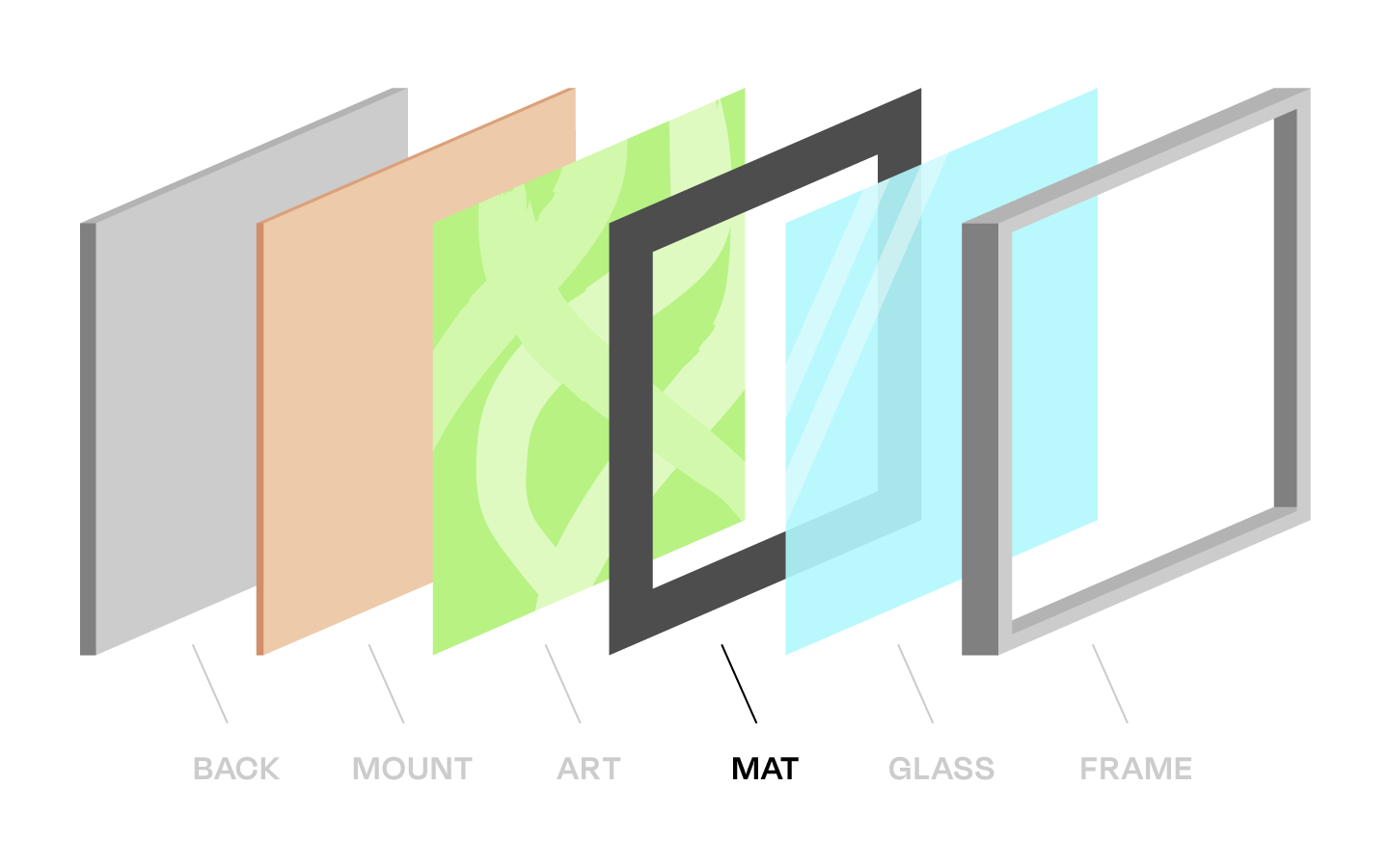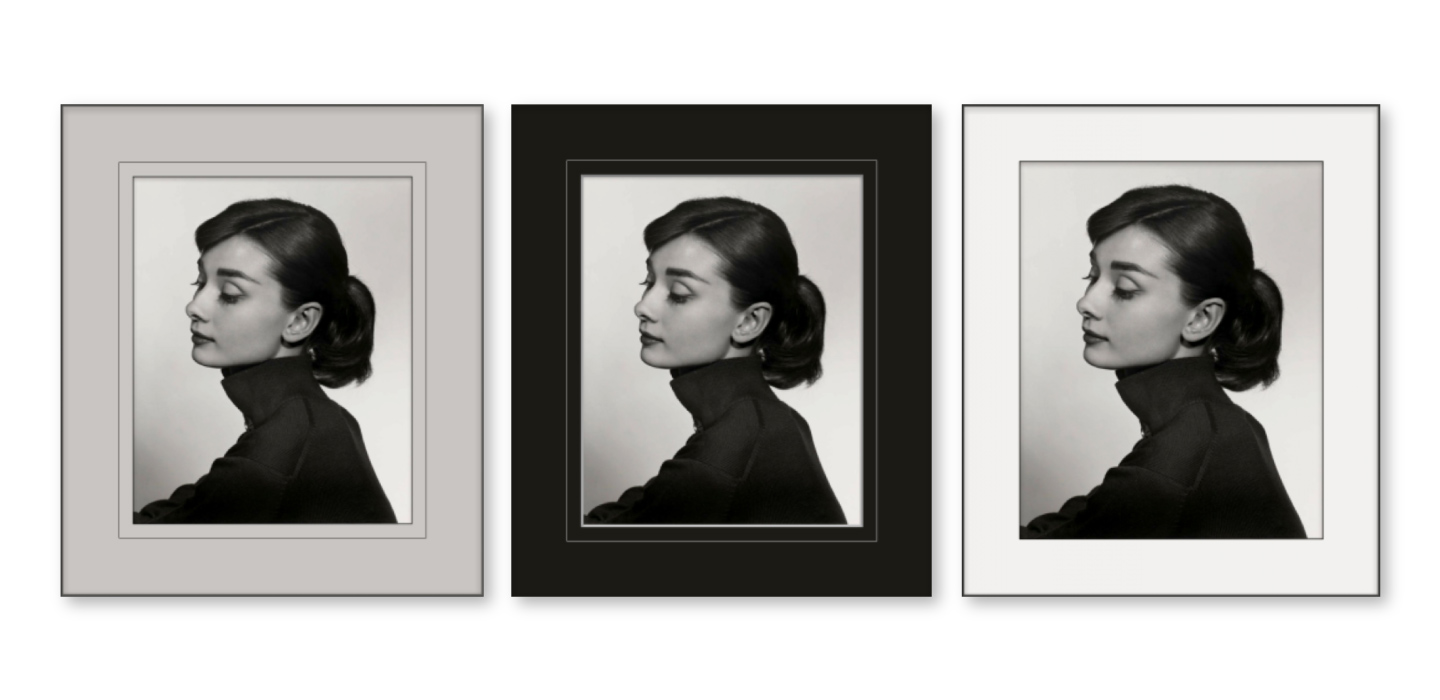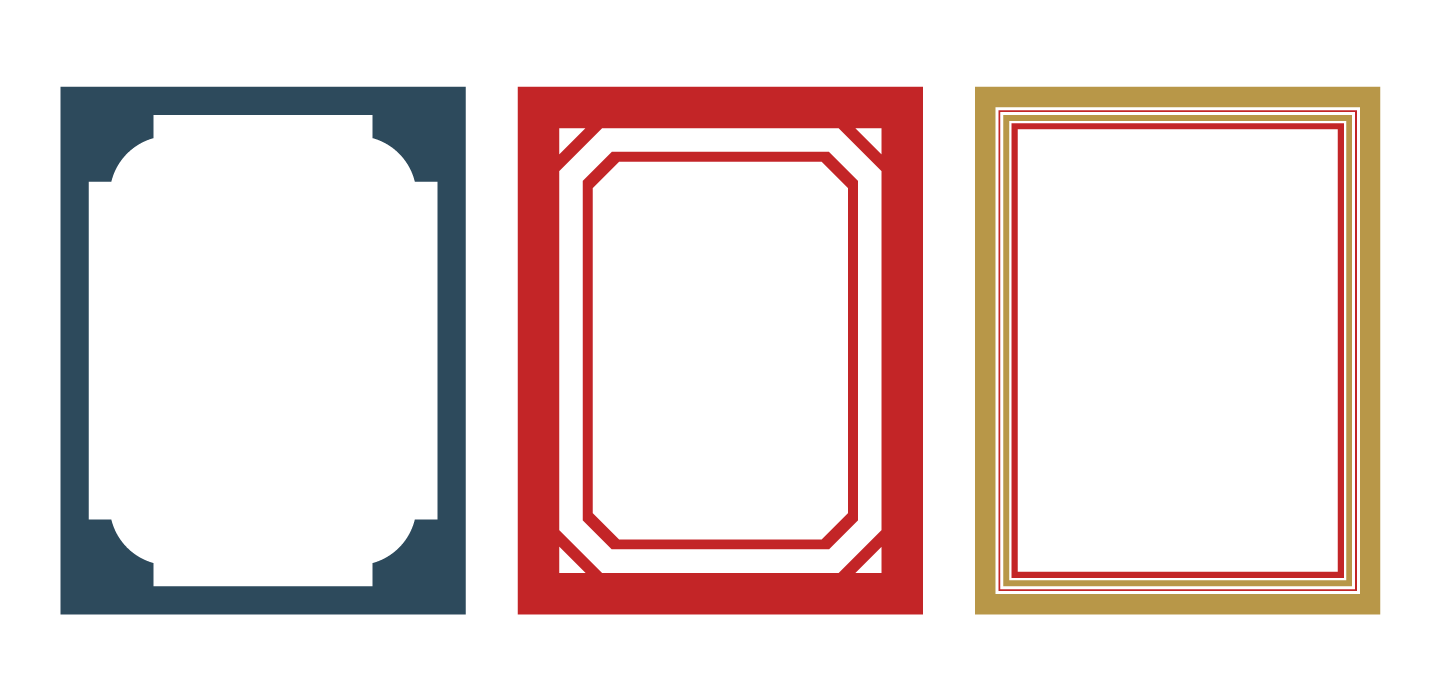
The mat is a dense colored cardboard (or other similar material) that frames a picture, photograph, or other artwork, creating a field of light or color around the image.
We have already been talking about the History Of The Mat, but why is the mat so imperative for particular forms of art? What is the important role of matting? Why would you want your artwork to be matted?
The role of a mat, as well as the role of a frame, is exceedingly important and consists of numerous functions:

Protective
Artworks created with watercolors, pastels, pencils, and any other graphic materials on paper are in urgent need of protection from the environment. Humidity, light, and temperature extremes may cause condensation inside the glass, and if the glass is touching the artwork, it will certainly be damaged. The mat creates a space between the glass and the picture, separating them, and thus preventing deformation, color loss, and growth of mold.

Aesthetic
The main purpose of matting, though, is to help your art pop. Playing the role of finishing touch in the overall composition, this color frame can dramatically improve the look of your artwork:
- Enhancing art. The mat creates a neutral zone between the frame and the artwork and adds some lightness and depth to the picture. Also, if chosen properly, a mat helps the viewer separate the image from the frame and the rest of the space around it, placing focus on the piece of art or a particular key element of it.
- Choice of size. If you have a tiny masterpiece that deserves to be visible, matting will help your art to look more solid. Also, matting will be a great solution for several pieces of similar art but of different size to look equal on the wall.
- Change of color accents. By using a mat, it’s easy to focus the viewer’s eye towards particular details in the artwork. On, say, a winter landscape, you can highlight blue-white snow or warm light from the house windows. In this way, the overall mood of the piece can be changed.

- Additional decoration. If you want to decorate your artwork, a mat with a designed surface can be used (choices include a French mat, specific patterns, ornaments, and so on). Other approaches include using a double and triple mat. These artistic elements can enhance the picture and make it look more professional, as well as adding some value to it.
- Balance. Wide mat margins can look great in situations when the image is not balanced. For example, matting will add some “air” to the images showing movement, as well as to dense images in which objects fill most of the picture space.
- Match the interior. The mat is also intended to connect the picture with the frame (if any), as well as with the space where it will be placed into the interior. Matching the wall, furniture and key elements of the interior design becomes easy with the help of a mat.
A well-chosen mat can help to create real fine art from a simple personal snapshot, adding value and originality to any image. It can also help the viewer to spot and select your artwork from hundreds of others.
 To learn a little bit more about how to choose the right color and size for a mat, read “How To Choose A Perfect Mat For Your Digital Photo”
To learn a little bit more about how to choose the right color and size for a mat, read “How To Choose A Perfect Mat For Your Digital Photo”
If you create or sell your art in a digital world, mat options are almost endless. ImageFramer offers a huge selection of digital mats for photos, paintings, and other forms of art. Here you can add a special mat for an oil painting, choose the mat color from your photo, or decorate your mat with dozens of design elements and their combinations.
Pro tip: if you use digital matting, its surface is a great place to leave a unique author’s signature that will not interfere with the artwork.
ImageFramer 4: Your art. Showcased.
Download the best-in-class Mac app for adding photorealistic frames and mats to photos and artwork today.
